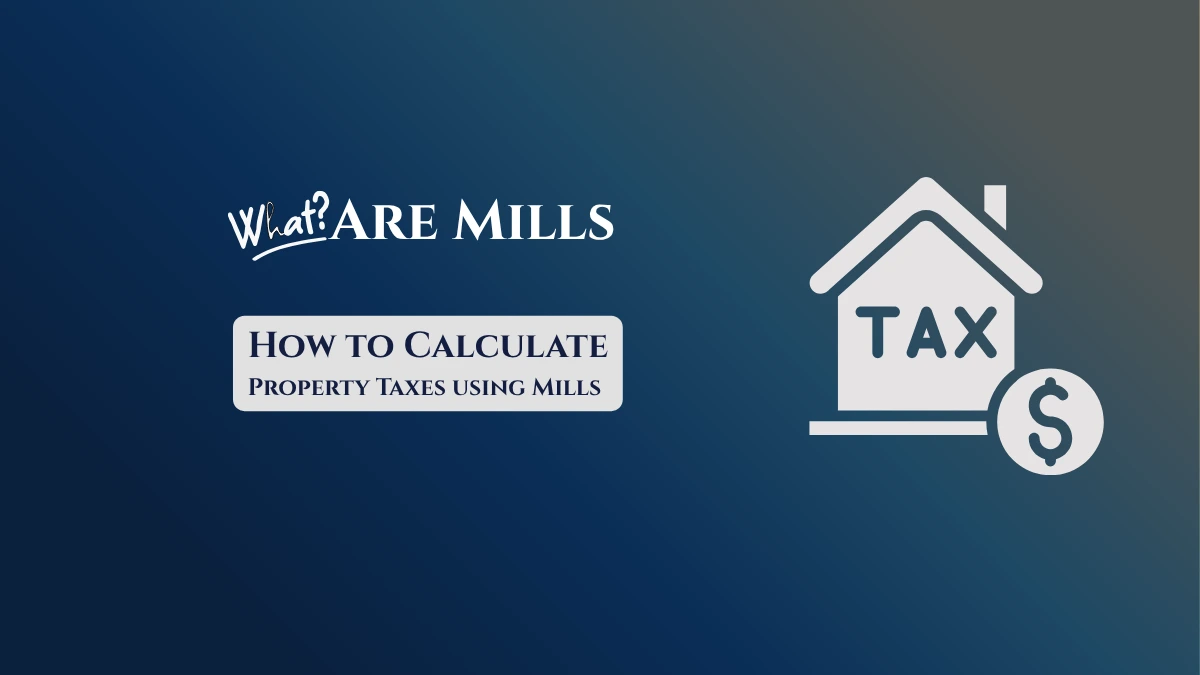Understanding what are mills in property taxes is essential for homeowners, as mills directly determine how much you owe in annual property taxes.
The term mill is fundamental to property tax calculations in the United States and impacts your financial obligations to local governments.

What are Mills in Property Taxes?
A mill in property taxes is a unit of measurement used to express the tax rate applies to the assessed value of your property. Specifically, one mill represents $1 in tax for every $1,000 of assessed property value.
The term comes from the Latin “millesimum,” meaning thousandth, indicating that a mill is one-thousandth of a currency unit.
For example, if your property assessed at $200,000 and the mill rate is 20, you would owe $4,000 in property taxes (20 * $200,000 ÷ 1,000 = $4,000).
How are Mill Rates Set?
Mill rates, also known as millage rates, are determined by local taxing authorities such as cities, counties, school districts, and special service districts.
Each entity sets its own mill rate based on its budget needs for public services like schools, fire departments, and infrastructure. The total mill rate for your property is the sum of all these individual rates.
How to Calculate Property Taxes using Mills
Calculating property taxes with mills is straightforward:
Property Tax = (Mill Rate * Assessed Value ) / 1000
For instance, if your home’s assessed value is $300,000 and the combined mill rate is 30, your tax would be: 30 * 300,000 / 1000 = 9000
This formula is used universally across jurisdictions that employ the mill system.
Why are Mills used in Property Taxes?
Mills provide a standardized way for local governments to express and apply property tax rates.
By using mills, municipalities can clearly communicate how much tax is owed per $1,000 of assessed value, making calculations transparent and consistent across different regions.
What is the Assessed Value?
The assessed value is the dollar value assigned to your property by a local tax assessor for taxation purposes.
This value is often a percentage of the property’s market value, determined by an assessment ratio, which varies by state and property type.
The mill rate is applied to this assessed value, not the full market value.
Who Pays Property Taxes based on Mills?
Almost all property owners in the U.S. including those with residential, commercial, and industrial real estate pay property taxes calculated using mills.
In some states, mills are also applied to certain types of personal property, such as vehicles or business equipment.
How do mill rates affect your tax bill?
The higher the mill rate, the more you pay in property taxes for the same assessed value. Since mill rates are set annually based on local government budgets, they can fluctuate from year to year.
Additionally, if your property’s assessed value increases, your tax bill will also rise, even if the mill rate remains unchanged.
If you believe your property’s assessed value is too high, then learn how to appeal your property tax assessment.
Common Questions about Mills in Property Taxes
Can mill rates vary by property type?
Yes, mill rates can differ based on property classification residential, commercial, industrial, or agricultural. Some jurisdictions set different assessment ratios or mill rates for each type.
Where can you find your mill rate?
You can locate your property’s mill rate on your property tax bill, your local government or assessor’s website, or by contacting your municipal tax office.
Are there exemptions or reductions?
Many jurisdictions offer property tax exemptions or reductions for seniors, veterans, primary residences (homestead exemptions), or other qualifying groups, which can lower the taxable value before the mill rate is applied.
Conclusion: Knowing what are mills in property taxes helps you understand how your annual tax bill is calculated and why it may change over time.
By recognizing that a mill equals $1 in tax per $1,000 of assessed value, you can interpret your property tax statement, anticipate changes, and make informed decisions about home ownership and budgeting.
For information on the consequences of missing property tax payments, read what happens if you don’t pay property taxes in USA.
When reviewing your next tax bill, remember that understanding what are mills in property taxes is the key to deciphering your local tax obligations.
